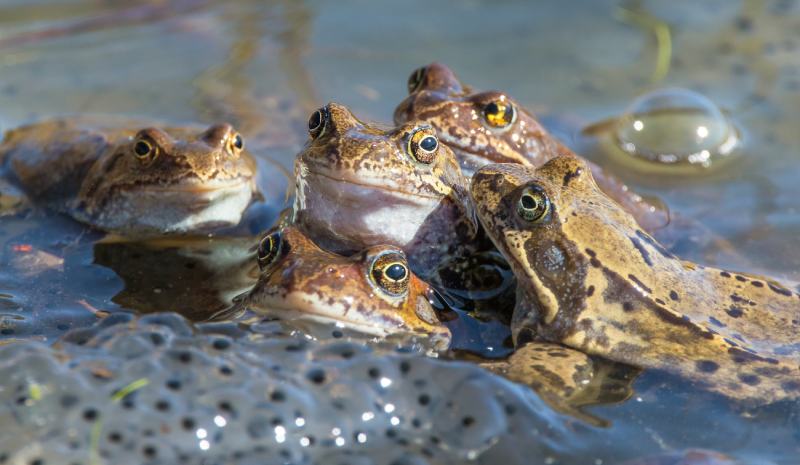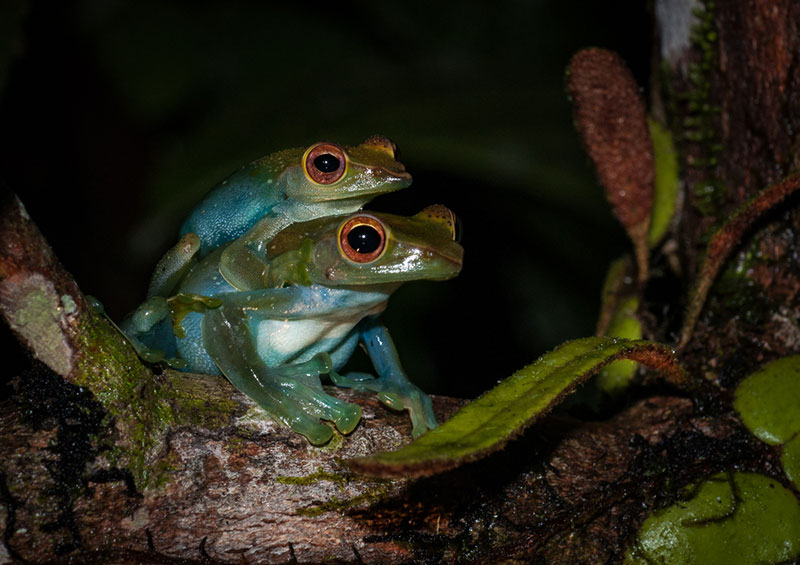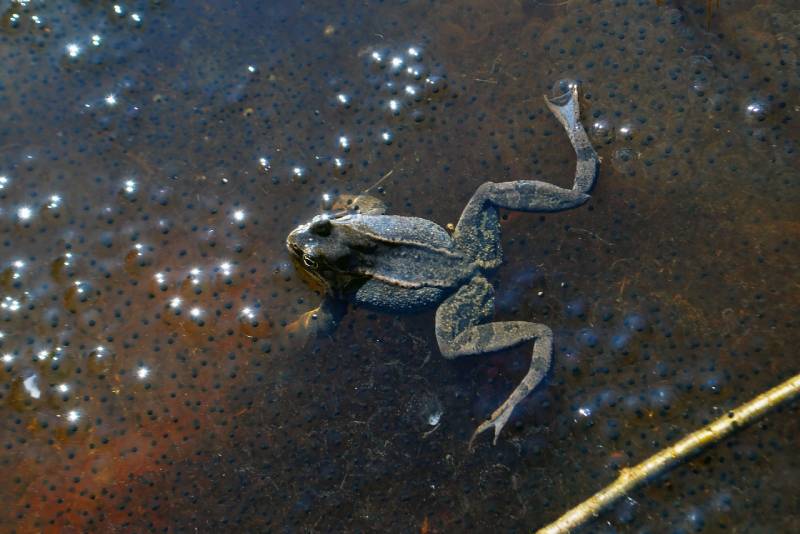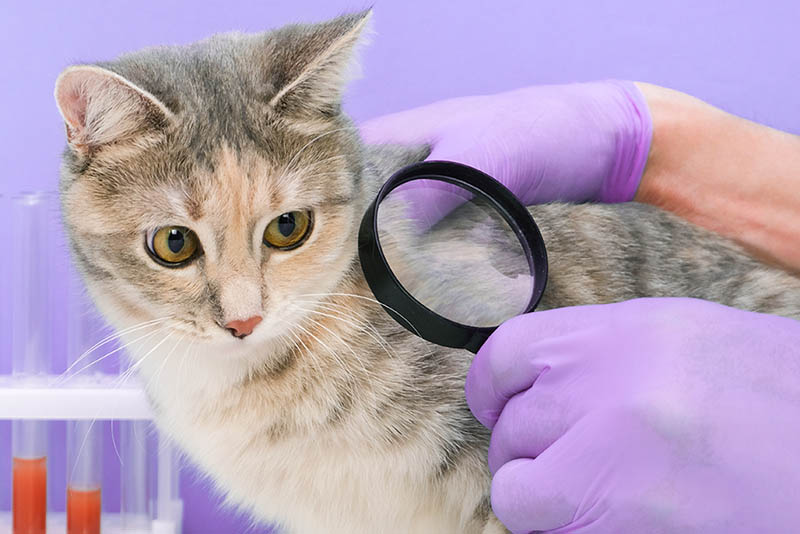How Do Frogs Reproduce? Mating Habits Explained (Vet Answer)

Updated on

Click to Skip Ahead
The frog’s reproduction process is complex and extraordinary. In general, most frogs lay eggs that hatch into tadpoles and then metamorphose into froglets which eventually mature into adult frogs. However, some species of frogs skip some stages of this process.
In this article, you will learn how frogs reproduce and other interesting facts.
How Do Frogs Mate?
The Mating Ritual
Sexual maturity in frogs is a process that begins when a frog reaches adulthood. Though species vary by species, males usually become sexually mature at around 4–6 months of age, while females often become sexually mature at around 8–12 months of age. Once the frogs are mature, they can begin to reproduce. However, their reproductive cycles are often dependent on the seasons.
Frog mating is a complex and interesting process with a high energy consumption. When the mating season comes, the male calls the female (with a mating call) at the breeding place. It has been scientifically proven that female frogs can distinguish between the calls of their own species and those of another species. In some species, males will defend the territory, while in others, male frogs will patrol the periphery to find receptive females. In some cases, females choose a male based on his abilities to provide and defend resources.
Although they are considered calm and peaceful animals, some species of frogs (e.g., bullfrog, green frog, etc.) can show aggressive behavior during the mating season. Males of these species will defend their territory from other males by biting and kicking. Some species of tree frogs will throw their opponent off the tree.
When the males call, the females will move toward them and locate them. During the mating process, the male frog grabs the female by the waist and holds her firmly. This mating embrace is called amplexus.1 In primitive frogs, the male grabs the female by the waist (inguinal amplexus) and in more advanced frogs, anteriorly by the armpits (axillary amplexus). It is believed that this position brings the cloacae of the two sexes closer together, making fertilization more efficient. However, fertilization in frogs is usually done externally; the male fertilizes the eggs the female releases during the amplexus process. A cloaca is a body cavity of frogs, reptiles, and birds, into which the digestive tube and genital and urinary ducts open.
This embrace can last hours (1–4 hours), days, or even months—as happened to a pair of Andean toads that stayed in amplexus for 4 months!2

How Do Frogs Reproduce?
Egg Laying and Hatching
All frogs reproduce sexually (i.e., the fusion of two organisms of the opposite sex is required), and all hatch from eggs.
There are over 6,000 species of frogs (including toads) in the world, and in most of them, fertilization is external—it occurs outside the female’s body, not inside. Once the male embraces the female, she selects the place to lay her eggs. The female releases her eggs, and the male releases his sperm at the same time. However, there are a few exceptions.
There is a species of frog discovered relatively recently, called Limnonectes larvaepartus, that gives birth to living tadpoles. Other frogs, such as tailed frogs (Ascaphus truei), have internal fertilization.3 The males of this species possess a “tail” (hence the name), a cloacal extension that it inserts into the cloaca of the female when mating. This species has evolved this way because the mating process takes place in fast-moving mountain streams.
The female marsupial frog (genus Gastrotheca) keeps her eggs in a pouch on her back. When they hatch into tadpoles, she opens the pouch with her toes and releases them into the water. There was also a species of frog (the southern gastric-brooding frog, Rheobatrachus silus, declared extinct in 2002) in which the female swallowed her fertilized eggs. After almost 8 weeks, little frogs would hop out of her mouth. Male Darwin’s frogs (Rhinoderma darwinii) swallow and store the developing tadpoles in their vocal sacs until the little frogs emerge.

Depending on the frog species, they will lay more or fewer eggs. For example, Rana pipiens (northern leopard frog) can lay up to 2,500 eggs, while Rana catesbiana (bullfrog) can lay between 1,000 and 40,000 eggs during one season, depending on their body size. Some species of frogs lay their eggs in the water on the rocks or vegetation, while others lay them in the center of the water (pond, lake, puddle, pool, etc.) without any kind of support.
Frogs have four broad stages:
- Egg
- Tadpole
- Froglet
- Frog
In frogs with external fertilization, after laying their eggs, the eggs will stay in the water for 1–3 weeks, during which time, the embryos grow and go through several changes. After a maximum of 3 weeks, they will hatch into tadpoles. The tadpole stage is the first phase of development. Tadpoles have a tail with which they use to move through the water, they have no legs, and they have gills instead of lungs. As time goes by, in about 14 weeks, the tadpoles will metamorphose into froglets. In these weeks, the back legs will appear and then the front ones, the lungs will develop, and changes at the level of the head will occur (larger mouth, raised eyes, etc.). Tadpoles will absorb their tail for nutrients during this time of metamorphosis.
Depending on the species, it can take up to 4 years for a froglet to reach full maturity.
Conclusion
All frogs reproduce sexually and have various mating rituals, depending on the species. For most, fertilization is external. The female selects a place to lay her eggs, and the male fertilizes them. Some frogs, such as tailed frogs, have internal fertilization and give birth to live tadpoles. The tadpole stage is the first stage of development. After that, they become froglets and then eventually, adult frogs, and the reproduction process begins again.
Featured Image Credit: Daniel Prudek, Shutterstock













